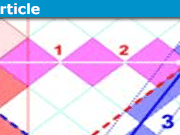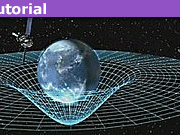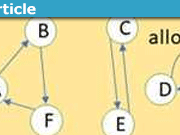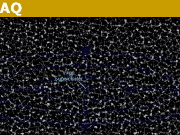The Revival of Newton-Cartan Theory in General Relativity
It’s a calculation which you can find in any textbook on General Relativity (GR): when gravity is weak and does not vary with time, and when particles are traveling slowly with respect to the speed of light, GR becomes good old Newtonian gravity again. However, this is done at the level of equations of motion. Conceptually, one can only wonder what happened in that Newtonian limit to the beautiful geometric picture of gravity as spacetime curvature.
In GR we have the equivalence principle, stating that locally an observer can always erase every appearance of gravity by acceleration. Because of this, the group of inertial observers of special relativity (without gravity) is extended in GR to all observers. Everyone is physically equal, as postmodern thinking confirms. In Newtonian gravity, we also have an equivalence principle, albeit more restrictive. Without gravity, inertial observers are connected by Galilei transformations, including spacetime translations, spatial rotations, and Galilei boosts. But when we switch on Newtonian gravity, these Galilei transformations are extended by arbitrary time-dependent accelerations. Locally, an observer can erase Newtonian gravity via such an acceleration. These Galilei transformations plus time-dependent accelerations are not as general as, well, general coordinate transformations, but nevertheless, it’s an equivalence principle.
These considerations give a hint that Newtonian gravity can also be described as spacetime curvature. That this is indeed possible was already shown by Elie Cartan, a few years after Einstein published his theory of GR. Cartan developed a rewriting of Newtonian gravity which is general-covariant, now known as Newton-Cartan theory (NC). Whereas in the Newtonian theory straight trajectories in flat space become curved under the influence of gravity, in Cartan’s reformulation these trajectories are geodesics in curved Newtonian spacetime. At the level of equations of motion, the two theories are exactly the same. So for example, in NC we will not find the orbit of Mercury precessing. But conceptually, the two theories are very different! NC smells a lot like GR. So what is the big difference between these two?
That big difference is the metrical (and hence, causal) structure. In GR, a flat spacetime is described by the Minkowski metric. This is the metric that is kept invariant under the Poincaré transformations of Special Relativity. It allows us to write down a spacetime interval. So in NC one expects that, when we switch off gravity, we find a metric that is kept invariant under the Galilei transformations. However, a quick calculation shows that such a metric does not exist. There is no single spacetime interval that is the same for all Galilean inertial observers. Instead, one finds two separate intervals, one for space and one for time. The physical reason is the appearance of absolute time in the Newtonian world. Under a Galilei boost, the new spatial coordinate involves time, but not the other way around. This leads to a degenerate metric structure: one metric for space, one metric for time, but no metric for spacetime!
This makes NC geometry a bit more subtle than the geometry we know and love of GR. To define inverse metrics, we need to define projective relations. Another subtlety is that the connection coefficients are not uniquely determined by the metrics anymore. Instead, metric compatibility allows for an extra ambiguity in the guise of a closed two-form. The details don’t matter, but after the exposure of GR, these properties can feel a bit uneasy and ugly.
Nevertheless, despite being ‘less pretty’ than GR, NC is a full-blown general covariant description of Newtonian gravity as spacetime curvature. It is also an interesting theory regarding Einstein’s confusion about the whole notion of general covariance. For some time, Einstein was convinced that general covariance was a defining property of GR, but he was corrected by Eric Kretschmann, who noticed that general covariance is not that much of a unique property as Einstein thought. Cartan confronted Einstein with this fact in the most beautiful way: even Newtonian gravity, the theory which Einstein reshaped, could be written down in a general-covariant and geometric way.
So why should we care about NC? There are several reasons. First of all, it provides us with a fantastic pedagogical tool. It enforces us to rethink the notion of general covariance. Also, notions like (local) supersymmetry can be defined in the framework of NC. It also gives us a framework in which we can truly compare Newtonian gravity with GR. Another reason is that NC geometry has become important in the non-relativistic limit of the so-called AdS/CFT correspondence. So in this respect, I would like to end with a call to all those future GR textbook writers: don’t leave out this chance to make your readers think more about the notion of space, time, and relativity. Include a section on Newton-Cartan theory!
Loves physics, philosophy and a lot of other stuff. Studied Theoretical Physics, obtained a PhD in Quantum Gravity and Cosmology research. Currently teaching mathematics at a university.








Leave a Reply
Want to join the discussion?Feel free to contribute!